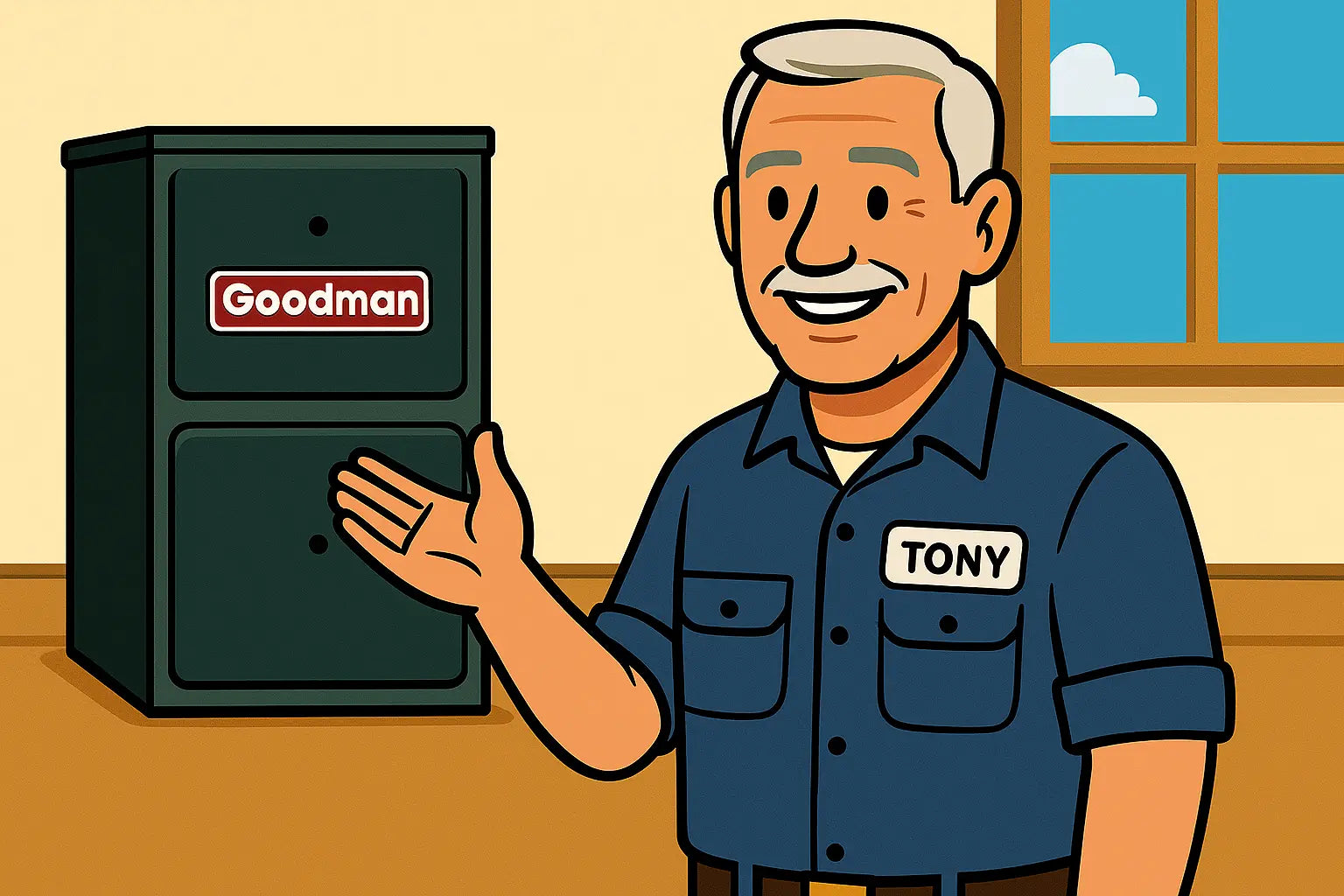Why Proper Installation Matters
Your Goodman GR9S960803BN furnace is engineered to deliver 96% AFUE efficiency, meaning nearly all of the fuel it consumes is converted directly into heat. But even the most advanced technology can’t overcome poor installation practices. A small oversight—whether it’s in venting, wiring, or airflow—can lead to higher energy bills, premature breakdowns, and even safety hazards.
According to the U.S. Department of Energy, improper installation is one of the most common reasons HVAC systems underperform. That’s why it’s crucial to understand the pitfalls before your furnace goes in.
Pitfall #1: Poor Sizing
One of the biggest mistakes is installing a furnace that isn’t the right size for your home. Oversized furnaces short-cycle, turning on and off frequently, which wastes energy and stresses components. Undersized furnaces run constantly, struggling to maintain comfort.
How to Avoid It:
Have a Manual J load calculation performed by a certified contractor. This method takes into account your home’s insulation, square footage, and climate zone for a precise match. The Air Conditioning Contractors of America (ACCA) provides guidelines that reputable installers follow.
Pitfall #2: Incorrect Venting
The Goodman GR9S960803BN requires proper venting to exhaust combustion gases safely. Incorrect slope, wrong materials, or inadequate sealing can cause dangerous backdrafting.
How to Avoid It:
Follow the manufacturer’s venting guidelines exactly. If upgrading from an older 80% AFUE model, understand that the 96% AFUE furnace produces cooler exhaust gases and often requires PVC venting. For safety, Energy Star recommends having venting installed or verified by a licensed HVAC technician.
Pitfall #3: Neglecting Airflow Design
Even with a 9-speed ECM blower, your furnace won’t perform efficiently if ductwork is undersized, leaky, or improperly sealed. Poor airflow can cause uneven heating, system strain, and reduced efficiency.
How to Avoid It:
Inspect and seal ductwork before installation. Use mastic sealant or foil tape on leaks. Ensure return and supply ducts are sized correctly for your furnace’s airflow. The National Comfort Institute emphasizes airflow testing as a critical step in HVAC commissioning.
Pitfall #4: Skipping Electrical and Gas Safety Checks
Loose wiring connections or poorly sealed gas lines are not only efficiency issues—they’re major safety hazards.
How to Avoid It:
Always have a qualified professional handle electrical and gas connections. They’ll use proper fittings, torque settings, and test equipment to confirm safe operation. The Occupational Safety and Health Administration (OSHA) provides standards to minimize risks during installation.
Pitfall #5: Ignoring Manufacturer’s Instructions
Some installers take shortcuts or rely on past experience rather than following Goodman’s detailed installation manual. Even small deviations—like thermostat wiring or condensate line setup—can void your warranty.
How to Avoid It:
Insist that your contractor follows Goodman’s official guidelines for the GR9S960803BN. Proper adherence ensures not only performance but also protection under the warranty terms.
Final Thoughts
Avoiding these pitfalls means your Goodman GR9S960803BN furnace will deliver the efficiency, comfort, and reliability it’s designed for. From correct sizing and airflow to venting and safety checks, every step of installation plays a role in long-term performance.
If you’re preparing to upgrade, make sure to choose a qualified installer who understands the details that matter. To see the full specifications and explore this model further, visit the Goodman 96% AFUE 80,000 BTU Gas Furnace GR9S960803BN.
Need more installation and troubleshooting tips for this unit? Visit my guide right here!
Until next time,
- Tony the Trusted Tech!







